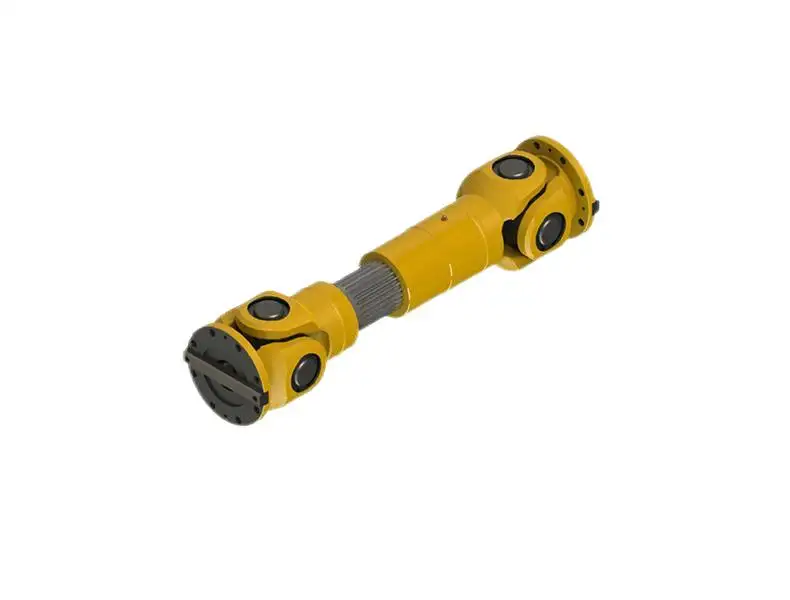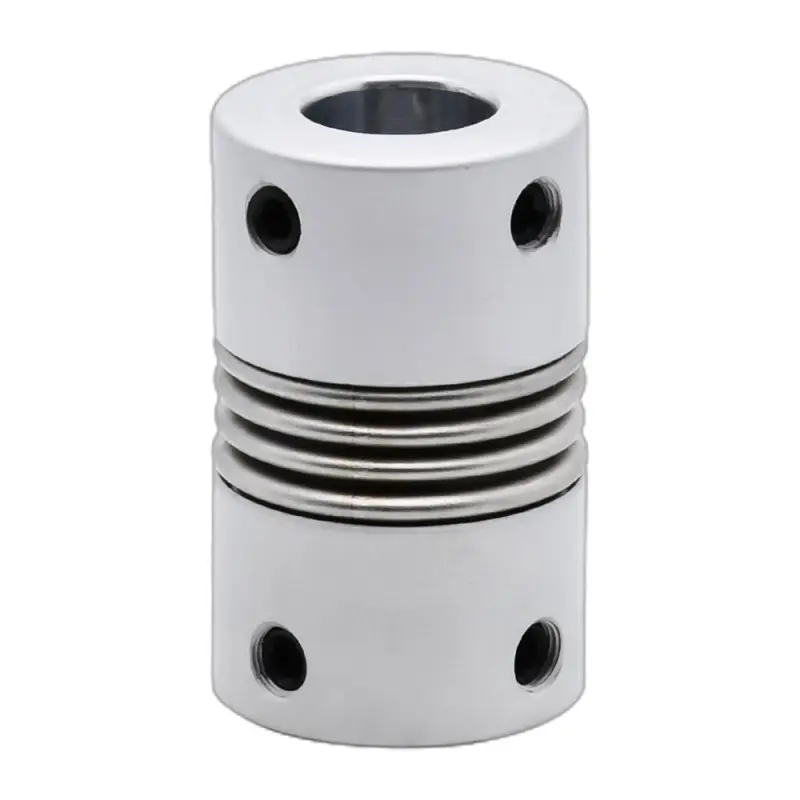Precision in Motion Control Applications
In many high-performance systems, achieving precise and reliable torque transmission is essential. Whether in robotics, semiconductor equipment, or medical devices, engineers rely on components that not only transmit motion but do so with exceptional accuracy and rigidity. One such component that stands out in these scenarios is the bellows coupling. Known for its exceptional torsional stiffness and zero-backlash operation, the bellows coupling plays a vital role in optimizing performance and maintaining mechanical stability.
Understanding the Structure of a Bellows Coupling
Metal Bellows Design
At the core of every bellows coupling is the metal bellows—a thin-walled, flexible tube usually made of stainless steel. The convolutions or folds in the bellows allow for slight axial, angular, and parallel misalignments without losing its torsional rigidity. This geometry is not just about flexibility; it contributes significantly to how the coupling transmits torque while resisting torsional deflection.
Material Selection and Engineering Precision
The choice of material directly influences the performance of a bellows coupling. Stainless steel offers both high torsional strength and resistance to fatigue. Coupled with high-precision manufacturing techniques such as laser welding and CNC machining, the result is a coupling that can handle high-speed rotations with minimal error in angular displacement.
The Role of Torsional Rigidity in Motion Systems
Importance of Torsional Rigidity
Torsional rigidity refers to the coupling’s ability to resist twisting under torque. High torsional rigidity is critical in applications that demand precise positioning, especially in servo-driven systems. A bellows coupling provides this stiffness, ensuring that torque from the motor is transmitted to the load without delay or loss.
Zero Backlash Operation
One of the standout characteristics of a bellows coupling is its ability to operate without backlash. This means there is no play between the driving and driven components, which is essential for high-precision tasks. In contrast to other flexible couplings, which may absorb energy and introduce lag, a bellows coupling maintains a direct, responsive connection.
Application Benefits in Industrial Automation
Enhanced Servo Motor Performance
Servo motors benefit significantly from the use of bellows couplings. Because these motors require exact feedback and control, any torsional play can disrupt system performance. A bellows coupling enhances responsiveness and accuracy, contributing to smoother motion profiles and increased system longevity.
Improved Repeatability in Robotics
In robotics, precision and repeatability are paramount. Bellows couplings ensure that each movement is consistent and accurate by eliminating angular displacement errors. Their robust design also supports dynamic operations over long cycles without degradation in performance.
Comparing Bellows Couplings to Other Coupling Types
Bellows vs. Beam Couplings
Beam couplings offer flexibility and are ideal for light-duty applications. However, when it comes to torsional rigidity, bellows couplings outperform them significantly. The multiple cuts in a beam coupling, while providing misalignment compensation, also reduce stiffness—something that is unacceptable in high-precision environments.
Bellows vs. Oldham Couplings
Oldham couplings are good for accommodating misalignment, but they suffer from backlash due to their three-piece construction. A bellows coupling, being a single integrated unit, avoids this problem while still offering misalignment tolerance, making it better suited for synchronous motion applications.
Design Considerations for Optimal Performance
Installation Precision
For a bellows coupling to function at its best, correct installation is vital. Misalignment beyond design limits can induce stress concentrations that lead to premature failure. Alignment tools and torque specifications should be followed strictly to maximize lifespan and maintain system accuracy.
Load and Torque Calculations
Engineers should calculate the expected load and torque to select the right bellows coupling. Oversizing may lead to unnecessary rigidity and stress, while undersizing can compromise torsional performance. Proper sizing ensures that the coupling performs efficiently without becoming a system weak point.
Why Bellows Couplings Are Ideal for High-Speed Applications
High RPM Capability
Bellows couplings are inherently suited to high-speed applications due to their lightweight and balanced construction. Unlike bulkier couplings, the low mass of the bellows minimizes centrifugal forces, reducing wear and increasing operational stability at high rotational speeds.
Thermal and Chemical Resistance
Another strength of bellows couplings lies in their resistance to temperature extremes and chemical exposure. In industries such as semiconductor manufacturing or medical diagnostics, where sterilization and cleanliness are crucial, bellows couplings maintain performance without degradation.

Maintenance and Longevity
Minimal Wear Components
The non-contact nature of bellows coupling operation results in minimal wear over time. There are no sliding or rubbing parts, which reduces the need for lubrication and routine maintenance. This makes them ideal for environments where long-term reliability is critical.
Failure Prevention through Monitoring
Although bellows couplings are durable, periodic inspections can help detect early signs of fatigue or material stress. Monitoring vibration and temperature can provide insights into coupling health, allowing preventive maintenance to avoid unexpected downtime.
Frequently Asked Questions
What applications benefit most from using bellows couplings?
Bellows couplings are ideal for precision systems such as CNC machinery, robotics, semiconductor equipment, and medical devices, where high torsional rigidity and zero backlash are essential.
How do I determine the correct size bellows coupling for my application?
To choose the right size, consider torque requirements, misalignment levels, RPM, and shaft diameters. Manufacturers typically provide sizing charts and engineering support for accurate selection.
Are bellows couplings resistant to environmental factors?
Yes, their stainless steel construction provides excellent resistance to corrosion, chemicals, and temperature extremes, making them suitable for harsh or sterile environments.
What maintenance is required for bellows couplings?
Bellows couplings require minimal maintenance. Regular inspections for signs of fatigue or misalignment, along with occasional torque checks, are usually sufficient.
Table of Contents
- Precision in Motion Control Applications
- Understanding the Structure of a Bellows Coupling
- The Role of Torsional Rigidity in Motion Systems
- Application Benefits in Industrial Automation
- Comparing Bellows Couplings to Other Coupling Types
- Design Considerations for Optimal Performance
- Why Bellows Couplings Are Ideal for High-Speed Applications
- Maintenance and Longevity
- Frequently Asked Questions

